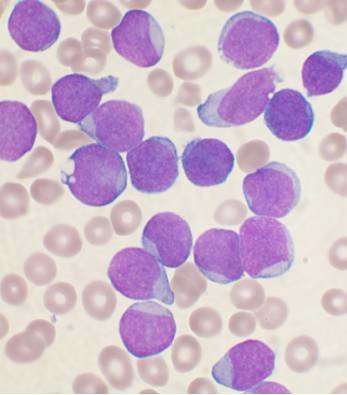This article has been reviewed according to Science X's editorial process and policies. Editors have highlighted the following attributes while ensuring the content's credibility:
fact-checked
trusted source
proofread
Half-matched family donors offer best outcomes for Hispanic patients undergoing bone marrow transplants: Study

For adults with acute lymphoblastic leukemia (ALL), a type of cancer that originates in the bone marrow, allogeneic stem cell transplantation (more commonly known as a bone marrow transplant) may be necessary for survival.
But for Hispanic patients, finding an identically matched donor within their family or through the bone marrow donor registry can be challenging, with only a 30% chance of finding a matching relative and a 48% chance of identifying a matching bone marrow donor through the national donor registry.
However, a new Keck Medicine of USC study published in Leukemia Research suggests that a bone marrow transplant from a haploidentical, or half-identical relative, may greatly increase patients' odds of success, in addition to being easier to find.
Parents and children are guaranteed half-matches, while siblings have a 50% chance of being half-matches, which is twice as likely as finding a fully matched sibling (25%).
The study retrospectively assessed outcomes from 88 patients with B-cell ALL (an aggressive type of leukemia wherein the body overproduces abnormal white blood cells called B-lymphocytes) who underwent a bone marrow transplant at USC Norris Comprehensive Cancer Center, part of Keck Medicine.
Bone marrow donors included fully matched sibling donors, fully matched unrelated donors identified through the national donor registry, and half-matched donors from the patient's family. The study assessed patient outcomes after two years following transplantation.
Patients who received their transplant from a half-identical relative were about 70% more likely to avoid relapse than those who received a bone marrow transplant from a fully identical relative.
Compared to patients who received a bone marrow transplant from an identically matched registered donor, half-identical relative transplant recipients were more than twice as likely to avoid both relapse and graft versus host disease, a debilitating condition wherein the body rejects the transplanted stem cells.
"These results suggest that Hispanic patients may benefit more from receiving a bone marrow transplant from a half-matched parent, child or sibling, rather than a full match from the national donor registry," said George Yaghmour, MD, a hematologist with USC Norris Comprehensive Cancer Center and lead author on the study.
"This creates opportunities for patients to receive a life-saving procedure that may otherwise be out of reach."
Finding a perfect match
Prior to receiving a bone marrow transplant, potential recipients must first find a donor with a matching human leukocyte antigen (HLA) tissue type. HLAs are proteins on cells that act like a signature or passcode for the immune system. When white blood cells find foreign cells with an unfamiliar HLA type, it triggers an attack response.
To ensure that a patient's immune system accepts the new bone marrow stem cells, doctors aim to find a donor with the closest possible match for the patient.
Because HLA tissue type is inherited, patients often look first to immediate family members as potential donors. Unrelated matched donors may be available through the National Marrow Donor Program (NMDP), which manages the largest registry of potential bone marrow donors.
Despite the size of the NMDP registry, certain ethnic backgrounds have more difficulties finding a match due to being underrepresented in the registry. While white patients have a 79% chance of finding a match through the registry, Hispanic patients are only 48% likely to find a match.
Hispanic patients have a higher incidence of ALL compared to white patients, and often present with higher-risk disease characteristics that are associated with more challenging outcomes and require complex care. This makes finding a bone marrow donor all the more crucial.
New opportunities with half-identical donors
Bone marrow transplants from half-identical family members have been performed more frequently due to the challenges in finding a fully matched donor, as well as due to treatment advances that help the body accept the new cells despite not having a fully matched HLA type.
Yaghmour hopes the study results will inspire larger clinical trials to further investigate the findings and provide insight as to why bone marrow transplants from half-identical relatives result in positive outcomes, particularly among patients with high-risk subtypes of ALL.
"These findings are a strong basis to continue researching the clinical benefits of haploidentical bone marrow donation, particularly among patient groups with historically limited access to fully matched donors," said Yaghmour, who is also the associate director of transplant and cellular therapy with USC Norris and an associate professor of clinical medicine at the Keck School of Medicine of USC.
"Future studies can potentially address health disparities while optimizing outcomes, and ultimately provide more hope for all patients facing this difficult diagnosis."
More information: Karam Ashouri et al, Donor matters: Donor selection impact on hematopoietic stem cell transplantation outcomes in Hispanic patients with B-cell acute lymphocytic leukemia: Insights from a myeloablative HSCT study, Leukemia Research (2024). DOI: 10.1016/j.leukres.2024.107501
















